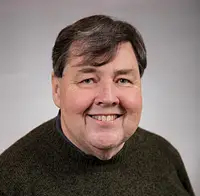News reports about America’s opioid epidemic frequently fail to mention the toll it takes on individuals and families. Focusing more on incarceration rates, the media offers few solutions to the individual struggling with drug dependence. What do you need to know about opioid use in the United States today?
91 Deaths: The Number of Americans That Die Because of an Opioid Overdose Everyday
This figure combines prescription painkillers and heroin, which both fall under the umbrella term “opioid.” This combination is not as unusual as you might think. Painkillers now act as a gateway drug for heroin because both substances work similarly, but the illicit drug is cheaper. It’s interesting to note that the death rate represents a four-fold increase.
650,000: The Number of Opioid Prescriptions that Pharmacies Fill Each Day
Doctors prescribe opioids for a variety of pain management situations. Among them are acute and chronic pain conditions. Examples may include dentists or surgeons offering prescriptions to patients who underwent recent surgeries. Primary care doctors prescribe these drugs for the management of chronic back pain and similar complaints.
3,900: The Number of People Who Start Using Prescription Opioids Non-medically Each Day
An addiction to painkillers begins with the creation of a physical tolerance. Your doctor might increase the dose so that you’ll get the same effect from the medication. Side effects, which include feelings of euphoria and being high, increase as well. Dependence begins when you take the drugs for side effects rather than the reason your doctor prescribed the drug.
25%: The Number of Users Who Receive Free Drugs from Friends
Many people imagine someone stealing opioids out of a family member’s medicine cabinet. This is true in a limited number of cases. A quarter of those who use opioids non-medically for about a year receive the drugs from friends for free. Doctor shopping, buying the pills directly from friends, or involving a dealer are the other avenues of purchase.
1 in 4 People: The Number of Opioid Epidemic Victims Struggling with Dependence after Receiving Long-term Painkiller Treatments
Opioid analgesics mask pain. But these drugs don’t make the pain go away. To remain free from suffering, a patient has to continue taking the medication. For one in four, this results in painkiller dependence.
If you’re struggling with opioid addiction of any type, Crestview Recovery has the answers. Whether you’re dealing with heroin, opioids, or other prescription drug issues, our knowledgeable therapists can help. Treatment program options include partial hospitalization or intensive outpatient settings for dual diagnosis and individual therapies.
At Crestview Recovery, we know that there are many elements that make up the opioid epidemic. Whether you’re addicted to legal pain killer prescription medications or an illicit drug such as heroin, you require quality drug addiction treatment. We treat a variety of elements of the opioid epidemic, including:
- Heroin Addiction Rehab
- Fentanyl Addiction Rehab
- Morphine Addiction Rehab
- Oxycodone Addiction Rehab
- Hydrocodone Addiction Rehab
It’s never too late to overcome your opioid addiction and begin a new chapter of your life. To learn more about our substance use treatment programs, or to get treatment, call Crestview Recovery today at 866.262.0531.

Since 2016, Dr. Merle Williamson, a graduate of Oregon Health Sciences University, has been the Medical Director at Crestview Recovery, bringing a rich background in addiction medicine from his time at Hazelden Treatment Center. He oversees outpatient drug and alcohol treatments, providing medical care, setting policies, detox protocols, and quality assurance measures. Before specializing in addiction medicine, he spent 25 years in anesthesiology, serving as Chair of Hospital Pharmacy and Therapeutics Committee and Chief of Anesthesia at Kaiser Permanente. This experience gives him a unique perspective on treating prescription drug addiction.






